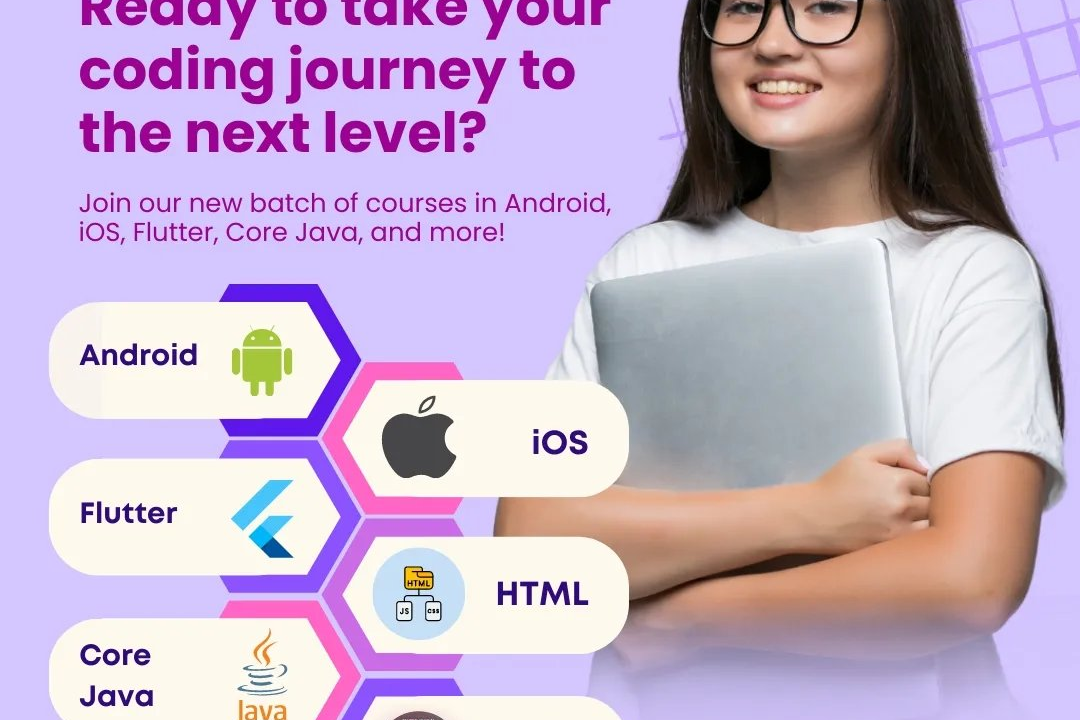Calculator Program in HTML and PHP
A calculator program built with HTML and PHP is a web application that allows users to perform basic
Calculator Program in HTML and PHP
A calculator program built with HTML and PHP is a practical and engaging project that demonstrates the integration of frontend and backend web development. By utilizing HTML for the user interface, users can interact with buttons for numbers and operations, while PHP handles the logical processing of calculations on the server side. This type of application is useful for reinforcing programming concepts and improving problem-solving skills, as it covers essential topics like user input handling, server-client communication, and basic arithmetic operations. Furthermore, it serves as an excellent introduction to web development for those looking to build dynamic applications, making it a valuable addition to a portfolio of real-time projects.
To Download Our Brochure: https://www.justacademy.co/download-brochure-for-free
Message us for more information: +91 9987184296
A calculator program built with HTML and PHP is a practical and engaging project that demonstrates the integration of frontend and backend web development. By utilizing HTML for the user interface, users can interact with buttons for numbers and operations, while PHP handles the logical processing of calculations on the server side. This type of application is useful for reinforcing programming concepts and improving problem solving skills, as it covers essential topics like user input handling, server client communication, and basic arithmetic operations. Furthermore, it serves as an excellent introduction to web development for those looking to build dynamic applications, making it a valuable addition to a portfolio of real time projects.
Course Overview
The “Calculator Program in HTML and PHP” course offers a comprehensive introduction to building a functional web-based calculator using HTML for the front-end interface and PHP for the back-end logic. Participants will learn how to create interactive user interfaces with input fields and buttons, as well as how to implement arithmetic operations such as addition, subtraction, multiplication, and division through PHP scripting. The course emphasizes practical skills by guiding students through the entire development process, from designing the layout to deploying the application on a server. By the end of the course, learners will have a solid understanding of web development fundamentals and a completed project to showcase their skills.
Course Description
The “Calculator Program in HTML and PHP” course is designed to teach participants how to create a fully functional web-based calculator application. Focusing on both front-end and back-end development, this course covers HTML for designing an intuitive user interface and PHP for implementing the necessary logic to perform arithmetic operations such as addition, subtraction, multiplication, and division. Through hands-on projects, learners will gain practical experience in coding, debugging, and deploying their projects, equipping them with essential web development skills that can be applied to real-world scenarios. By the end of the course, participants will have a completed project that demonstrates their proficiency in combining HTML and PHP, providing a strong foundation for future web development endeavors.
Key Features
1 - Comprehensive Tool Coverage: Provides hands-on training with a range of industry-standard testing tools, including Selenium, JIRA, LoadRunner, and TestRail.
2) Practical Exercises: Features real-world exercises and case studies to apply tools in various testing scenarios.
3) Interactive Learning: Includes interactive sessions with industry experts for personalized feedback and guidance.
4) Detailed Tutorials: Offers extensive tutorials and documentation on tool functionalities and best practices.
5) Advanced Techniques: Covers both fundamental and advanced techniques for using testing tools effectively.
6) Data Visualization: Integrates tools for visualizing test metrics and results, enhancing data interpretation and decision-making.
7) Tool Integration: Teaches how to integrate testing tools into the software development lifecycle for streamlined workflows.
8) Project-Based Learning: Focuses on project-based learning to build practical skills and create a portfolio of completed tasks.
9) Career Support: Provides resources and support for applying learned skills to real-world job scenarios, including resume building and interview preparation.
10) Up-to-Date Content: Ensures that course materials reflect the latest industry standards and tool updates.
Benefits of taking our course
Functional Tools
1 - HTML (HyperText Markup Language): HTML is the foundational language for creating web pages. In this course, students will learn to structure the layout of their calculator program using HTML elements like forms, input fields, and buttons. The semantic markup not only organizes the content but also enhances accessibility for users. HTML allows participants to define the user interface, making it visually appealing and interactive. Understanding HTML is essential, as it forms the backbone for any web application, enabling users to input data into the calculator effectively.
2) PHP (Hypertext Preprocessor): PHP is a server side scripting language that powers dynamic content and interaction on websites. In the calculator program, PHP will be used to handle user inputs, perform calculations, and generate results. Students will learn how to write PHP scripts that process the data submitted through the HTML form, providing instant feedback to users. This functionality showcases how PHP interacts with HTML elements, making the application responsive and efficient. Understanding PHP is crucial for back end development and enhances students’ programming skills significantly.
3) CSS (Cascading Style Sheets): CSS is employed to style the HTML elements of the calculator application. Students will learn to apply CSS properties to improve the visual presentation, such as colors, fonts, layouts, and spacing. By utilizing CSS, participants can create an attractive and user friendly interface for their calculator program. This knowledge empowers them to enhance the overall user experience, making their applications not only functional but also visually appealing. Mastery of CSS is essential for any aspiring web developer focusing on front end design.
4) JavaScript (optional for Client Side Interactivity): While the main focus of the course is on HTML and PHP, an introduction to JavaScript may be included for additional client side interactivity. JavaScript can enhance the functionality of the calculator by allowing for immediate calculations without the need for a page refresh. Students will explore how to implement JavaScript functions that respond to user actions, such as button clicks. Learning JavaScript expands their toolkit and provides insight into creating responsive web applications, increasing their marketability in the tech industry.
5) Web Server (e.g., XAMPP): To run PHP scripts locally, students will use a web server environment like XAMPP. This server setup includes Apache, MySQL, and PHP, allowing participants to test their application in a realistic setting. By learning to configure and manage a local server, students gain valuable insights into the web development process. Understanding how to set up and troubleshoot a web server is essential for deploying applications and facilitates a smoother transition to production environments.
6) Version Control System (e.g., Git): The course will introduce students to version control using Git, a tool that helps track changes in code and collaborate effectively. With Git, students will learn how to manage their project files, revert to previous versions, and work on collaborative projects with ease. This skill is invaluable in the professional world, where teamwork and code management are integral to successful software development. Understanding Git prepares students for real world development environments and fosters a collaborative work ethic.
Here are additional points to expand on the skills and tools that will be covered in the JustAcademy course for creating a calculator web application:
7) Form Validation: Students will learn how to implement form validation both on the client side (using JavaScript) and server side (using PHP). This ensures that user inputs are correct and helps prevent errors or malicious input. By validating input data, participants will create a more secure and robust application, protecting it from potential vulnerabilities.
8) Error Handling: The course will cover techniques for handling errors gracefully in the calculator application. Students will learn to display user friendly error messages when inputs are invalid or when calculations fail. This knowledge not only improves user experience but also enhances the application’s reliability.
9) Responsive Design: In today’s mobile first world, understanding responsive design is crucial. Students will learn how to make their calculator application responsive using CSS media queries. This ensures that the application looks good and functions well on various devices, from desktops to smartphones, providing a seamless user experience.
10) User Experience (UX) Principles: The course will touch upon fundamental UX principles that enhance user interaction with the application. Students will learn about the importance of user centric design, intuitive navigation, and effective use of interface elements, ensuring that their calculator is not only functional but also enjoyable to use.
11 - Project Deployment: Once the calculator application is completed, students will learn how to deploy their project to a live environment. This includes understanding hosting options, domain registration, and the deployment process. Gaining this knowledge prepares students for real world scenarios where they will need to make their applications available to users online.
12) API Integration: Although not mandatory, students will have the opportunity to explore how to integrate APIs (Application Programming Interfaces) into their calculator application. This could involve using third party services for currency conversion or integrating calculation libraries to enhance functionality, demonstrating how to extend the application’s capabilities.
13) Database Connection (optional): For students interested in expanding their calculator application, the course might introduce basic concepts of connecting to a database using MySQL. Participants will learn how to store user inputs or historical calculation data, allowing for more complex functionalities such as retrieving previous calculations or user preferences.
14) Coding Best Practices: Emphasizing good coding practices, the course will cover topics such as code organization, readability, and commenting. Students will learn the importance of writing clean, well structured code that is easy to maintain and collaborate on, critical for long term project success.
15) Project Showcase and Portfolio Building: At the conclusion of the course, students will have the opportunity to showcase their finished calculator application. This project will serve as a valuable addition to their portfolios, demonstrating their skills to potential employers and setting them apart in the job market.
16) Networking and Community Building: The course will encourage students to engage with online developer communities and forums. Networking with other developers can provide support, inspiration, and opportunities for collaboration on future projects, enriching their learning experience beyond the course content.
These points aim to provide a comprehensive overview of the skills and knowledge students will gain during the JustAcademy course, preparing them for success in web development and their future careers.
Browse our course links : https://www.justacademy.co/all-courses
To Join our FREE DEMO Session:
This information is sourced from JustAcademy
Contact Info:
Roshan Chaturvedi
Message us on Whatsapp:
Email id: info@justacademy.co
Selenium Appium Training Automation Testing Courses Manual Testing












